Resources
 Part of the Oxford Instruments Group
Part of the Oxford Instruments Group
Expand
Collapse
 Part of the Oxford Instruments Group
Part of the Oxford Instruments Group
Organoid research is one of the most interesting and exciting areas of research in recent years. One of the limitations with standard cell cultures, including specialised cells, is that it does not capture the more complex relationships of an organ composed of multiple cell types with multidimensional spatial organisation. Each of these cells function together and these interactions under conditions of stress, or disease states can only be seen fully in more complex models.
Spheroids are a more basic kind of organotypic model system that can be described as clusters of cells. They may include several cell types but do not have the same organisational arrangement that reflects a full organ.
Organoids are three-dimensional cell culture systems that replicate many of features and functions of the full organ yet are still practical as an in vitro research model. One of many of the applications that organoids can be used for is rapid drug screening prior to clinical trials. This decreases the need for animal testing where problems that may result in loss of efficacy or side effects, are identified at the organoid stage.
An ever-growing number of organoids are now available to enable a more complete study of the respective full organ such as:
Cerebral or neural organoids are about 4 mm in diameter. They can comprise of neurons, glial and other cell types. Ectodermal cells from stem cells placed in a bioreactor in nutrient broth are able to develop neurons. After 30 days they display regions with organisation very similar to parts of native brain tissues. These organoids can be used to investigate certain human brain disorders and development, including different treatment strategies. Current applications centre around features observable in embryonic brains which have the closest resemblance to cerebral organoids.
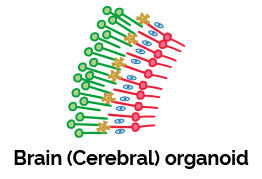
Kidneys are involved in vital homeostatic processes such as regulation of pH, extracellular fluid volume, ion production and filtering of waste products and toxic substances in blood as well as in hormone production. When kidney function becomes impaired it is often difficult to restore, meaning that dialysis and transplants and associated anti-rejection medication may be required. Study of kidney function at the organoid level is therefore of great interest because it can act as a disease model and potentially limit the need for traditional treatments in the future, or help development of improved treatments.
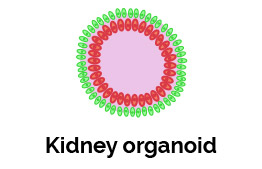
Studies of Liver (Hepatic) organoids enable research to be conducted on the roles the liver plays in detoxification, hormone production and protein synthesis. There is the potential to investigate development, toxicity and genetic and infectious disease using liver organoids. Liver organoids are proving to be a useful model for primary liver cancer – one of the main cancer-related causes of death. The studies have the advantage of patient specificity. Further information can be found here: Organoids in research of Liver Cancer.
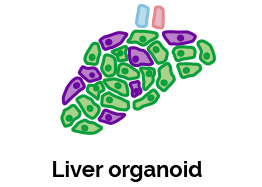
Since being first reported in 2009 (Nature article: Nature 459, 262–265; 2009) intestine organoids have proven a useful and flexible research model. The intestine is a complex organ. It has a number of cell types with specific functions, with epithetical cells being active in intestinal barrier function. Protective functions provided by Goblet cells that secrete mucins and anti-microbial peptides. While Tuft cells, M cells and GALT cells also act in immune function roles. Many other cells act in cell signalling roles.
There is an increasing awareness in the importance of microbiome within the gut and imbalances of this are being linked to an increasing range of disease conditions. Gut organoids are thus a useful tool in many of these studies.
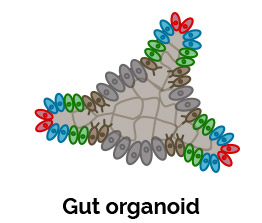
Lungs are made up of a system of branched tubes made up of around 40 distinct cell types. Pulmonary organoids act as microscopic lungs and can be made from cells derived from human or mouse lungs. Multiple cell types transport air/gas to the alveoli where gas exchange takes place. Other functions such as mucus formation and regeneration are also mimicked. Researchers are already using pulmonary organoids to look at diseases such as pulmonary fibrosis, where scar tissue builds up on the lungs causing breathing difficulties and disorders such as cystic fibrosis and asthma.
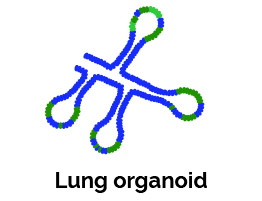
An exciting area of research is that of patient derived organoids termed tumoroids. By extracting these cells from a patient, studies can be conducted on the specific cells of that patient. This potentially opens new opportunities to tailor cancer therapies specifically to the patient and in response to any changes that happen during treatment. Early detection and fast and effective treatment is vital for many cancers. Tumoroids grown from tumor biopsies can be used to model expected drug responses and effective treatments.
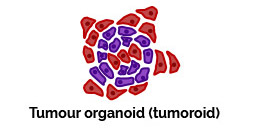
Date: February 2023
Author: Dr Alan Mullan & Dr Jo Walters
Category: Application Note
